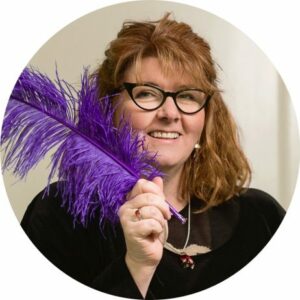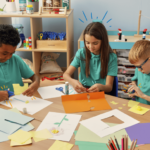Author: Alice Sharp
Alice employs her love of people and what makes them tick to approach the world of the child and the journey they take in a truly unique way.
Alice has been a teacher for 30 years. She is fascinated by how children develop and learn. What makes each of them tick, what challenges them and what delights and inspires them. This shapes her thinking every day! This curiosity and intrigue gives Alice a unique and quirky perspective on children and their journey into learning through play.
Celebrating Difference
It is easy to notice the differences between our children on the outside, but the differences on the inside are much harder to see.
When we have a key group of children, we can easily notice the colour of their hair, their skin tones, their height, their physical attributes and any physical challenges. We may easily notice their senses may be impeded by them wearing glasses, hearing aids, or having a cochlear implant.
However, as architects of the brain (we are in the job of building the neural pathways through play) we must understand that every child’s brain is different too.
A note of caution. Labelling children without understanding and having an extensive knowledge is not a good idea. That is why it is vital we share our observations, thoughts and concerns within our team. Even when we think it may be nothing, it is helpful to discuss it with a colleague. However, there is always a policy on how the process of concern should be handled. Know your policy.
What is meant by neurodiversity?
Neurodiversity in babies and young children refers to the understanding that our babies, toddlers and young children may demonstrate a range of neurological traits that differ from the typical developmental patterns we are familiar with. We all dipped into books by Jennie Lindon, Penny Tassoni and many others who took us through the stages of child development when we joined the early years sector. However, many of those books didn’t focus on the brains of our children.
We are now much more fully informed about the brain and how it works, but we can never know enough or remember it all. It is good to pause and rethink, re visit and reimagine how we can ensure no child is left behind.
Just as children have different personalities, temperaments, and physical traits, they may also have unique cognitive, emotional, and sensory processing styles. These variations are part of the natural diversity in how brains develop and function.
Individual Differences
Every educator knows that babies and young children develop at different rates and in different ways. We think about this, plan for it and are fully aware of it. Not enough consideration is given to the fact that even from the earliest of days some little ones may show signs of neurological differences that suggest they think, learn, or understand the world differently from others. For example, a baby might show an early preference for routine, which could be a sign of a later diagnosis of autism, or a toddler might struggle with paying attention, which could be an early indicator of ADHD. These variations are natural and part of the neurodiversity spectrum.
Noticing Signs of Neurodivergence
Autism
Some babies and young children may show signs of autism, some may show only a few signs, while others may show more obvious symptoms. We may notice differences such as limited eye contact, delayed speech development, a preference for solitary play, or a heightened sensitivity to sensory input (e.g. reacting strongly to lights, sounds, or textures). These early signs may vary greatly, as each child with autism has a spectrum of different needs.
ADHD
Other children might struggle maintaining focus and attention. They may exhibit hyperactivity or be very impulsive. These behaviours might be mistaken for “naughty” or “distracted,” but they can reflect underlying neurological differences associated with ADHD.
Some children may seem to be constantly on the move, even when they are supposed to be calm. They might have difficulty sitting still or staying in one place, even for short periods, and might seem “wired” or excessively energetic.
Some children may love to fidget with their hands or feet or have difficulty staying seated during activities. They may appear to be constantly restless during their play or snack time.
Older children might talk excessively, interrupt others, or struggle to stop talking even when it’s not their turn, the right time or appropriate.
Dyslexia
Dyslexia is typically diagnosed in older children when they begin learning to read and write more formally (usually around 5 or 6 years old).
Children with dyslexia might show early signs of difficulty with speech sounds, word recognition, or coordination between listening and speaking. These signs may be evident before they begin reading but could indicate challenges related to later literacy development.
Sensory Processing Differences
Some young children might display sensory processing issues, such as being either highly sensitive to sensory stimuli (e.g. loud noises, bright lights, or certain textures) or seeking out intense sensory input (e.g. spinning or touching things repetitively). These differences can indicate a form of neurodivergence, such as sensory processing disorder.
When working in the early childhood sector we are always looking to expand our understanding on how children develop and learn. The beginning of expanding our knowledge may start with considering:
• The importance of early recognition
• The benefits of support and accommodations
• The value of emphasising strengths
• The need for a shift in perspective – variation not deficit
• The vital role of parents and caregivers
By promoting understanding and acceptance of neurodivergent children from a young age, we can help them thrive. With more knowledge we can develop more effective interventions, accommodations, and create positive environments where all children are valued for their unique abilities.



